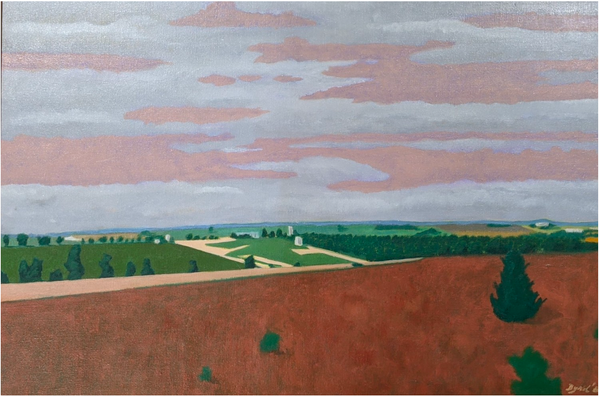Jenie Gao's "Three Generations Happy Family"
by Michelle Sharp
Find images of Three Generations Happy Family on Jenie Gao's website.
Though all the works at the Wisconsin Artists Biennial 2024, recently on exhibit at the Museum of Wisconsin Art, were stunning, nothing grabbed my attention more strongly than Three Generations Happy Family by Jenie Gao.
As a fanatic of zines and a proponent of book arts/artist’s books, this piece truly encapsulates the experience of both a formal artist book and a zine. For those unfamiliar, books as art utilize 2D space on the page, 3D space in their form or sculptural elements, time-based experiences by the pacing of those spaces, and an interactive element or invitation for a viewer to engage in the workphysically. Many artist’s books use unique materials or processes and are run in small editions, often collected by special libraries. Zines are typically brief, quickly or affordably made, often about personal experiences, budget-friendly for the general population to collect, and thrive in the act of sharing or “the handoff” of one viewer to another. Many zines are photocopied and run in any number of editions, or no formal edition at all.
This particular artist’s book is genius in its simplicity, truly a cohesive creation of form and content that has not been overworked. This book, a single paper sheet presented as a trifold, guides the viewer through the timeline of Gao’s family. They immigrate to the United States from China and Taiwan, subsequently open a restaurant, and go through many milestones as a family. By mimicking a Chinese takeout menu, Gao has created a readily recognizable object that the general public is comfortable interacting with. For those unfamiliar, one of the most important facets of a successful artist book is inviting the viewer to interact with the object: what better invitation than a form unassuming and already familiar? The content of the object is formated in the mode of a takeout menu as well, using a date to mark the “menu item’s” number with the “menu item” being a significant event in the artist’s family’s past. All of the writing is posed objectively, dates and events from 1949 to 2019. For example:
1966....................The Cultural Revolution begins. 1997....................We sell Hunan Wok to a Jimmy John’s.
However, what Gao chooses to include as objectivity creates poetry and profundity.
1979.....Ba comes to the US. He cries during this first visit to an American grocery store.
1991..I start preschool. I don’t speak English. Other kids laugh at my accent. I stop speaking Chinese.
Her work reflects the experience of immigrants, ESL speakers, entrepreneurship, capitalism, and the commonplace of the diasporic experience in America. (It should be noted that I, the writer, am not an immigrant, an ESL speaker, or part of a diaspora.) For me, one of the most potent themes in this work is the comparison of different cultural expectations of children. Gao must straddle both American and Taiwanese Chinese expectations as she grows, evident not only in her writing regarding legacy but also her poetry about translations and common phrases. As someone who grew up with many expectations, I empathize with the reconciliation and grief she processes regarding the actions of her family predecessors and how they affect her life experience. Though I can only imagine how these feelings change with the added layers of Gao’s identity, I know her experience can be echoed by the myriad of other _______-Americans and first/second generation immigrants navigating the ever-changing landscape of our chaotic country that systematically oppress minorities and those unassimilated.
Jenie Gao is a Madison-based artist. More information about this work, and other bodies of her work, can be found at jenie.org.
Michelle Sharp (b. 1992) is an artist currently working in the Fox Valley area of Wisconsin. She works primarily in bookmaking media, photography, and writing. Michelle is inspired by the mundane, acts of sharing & discovery, literature, and structured systems.



